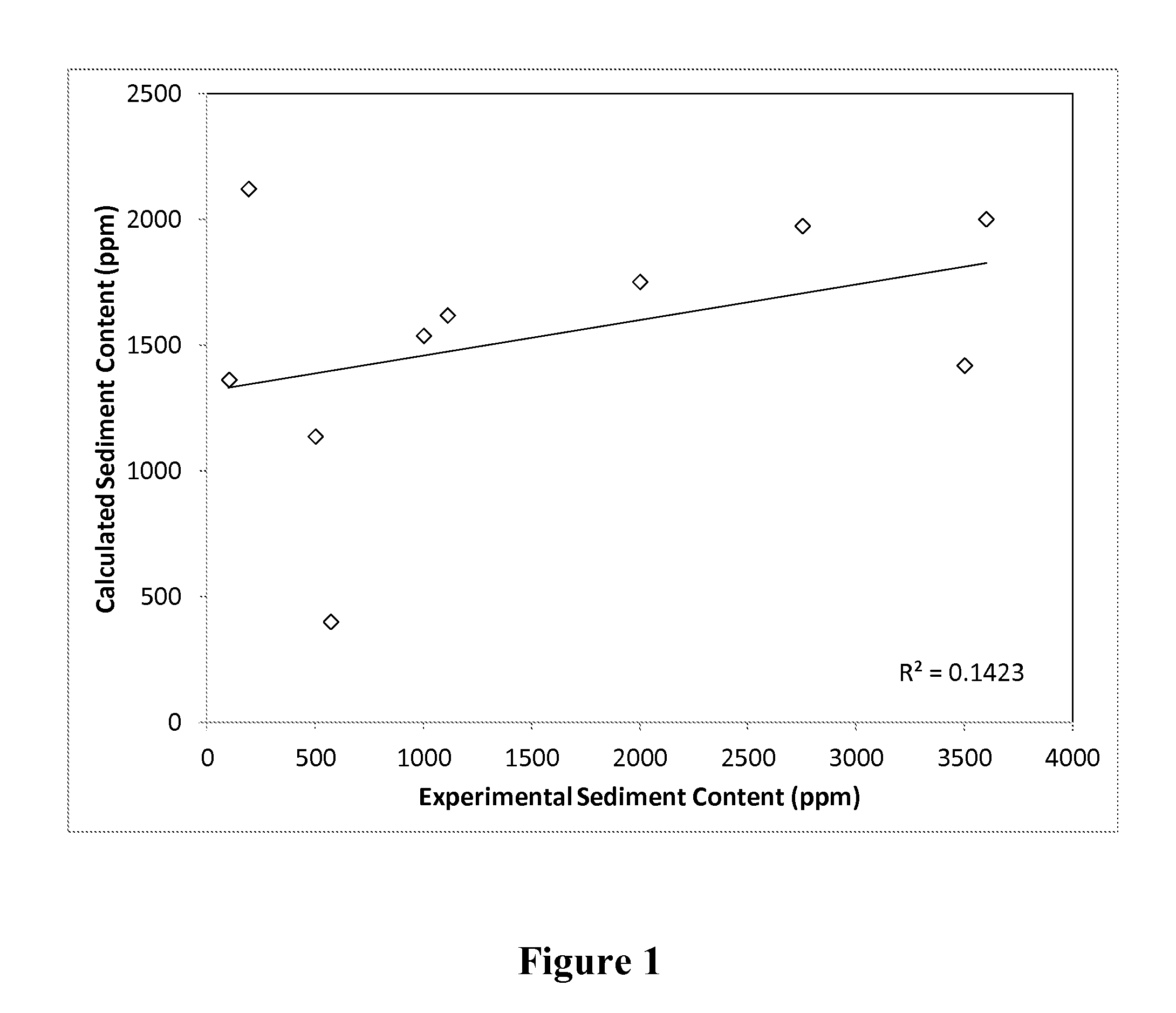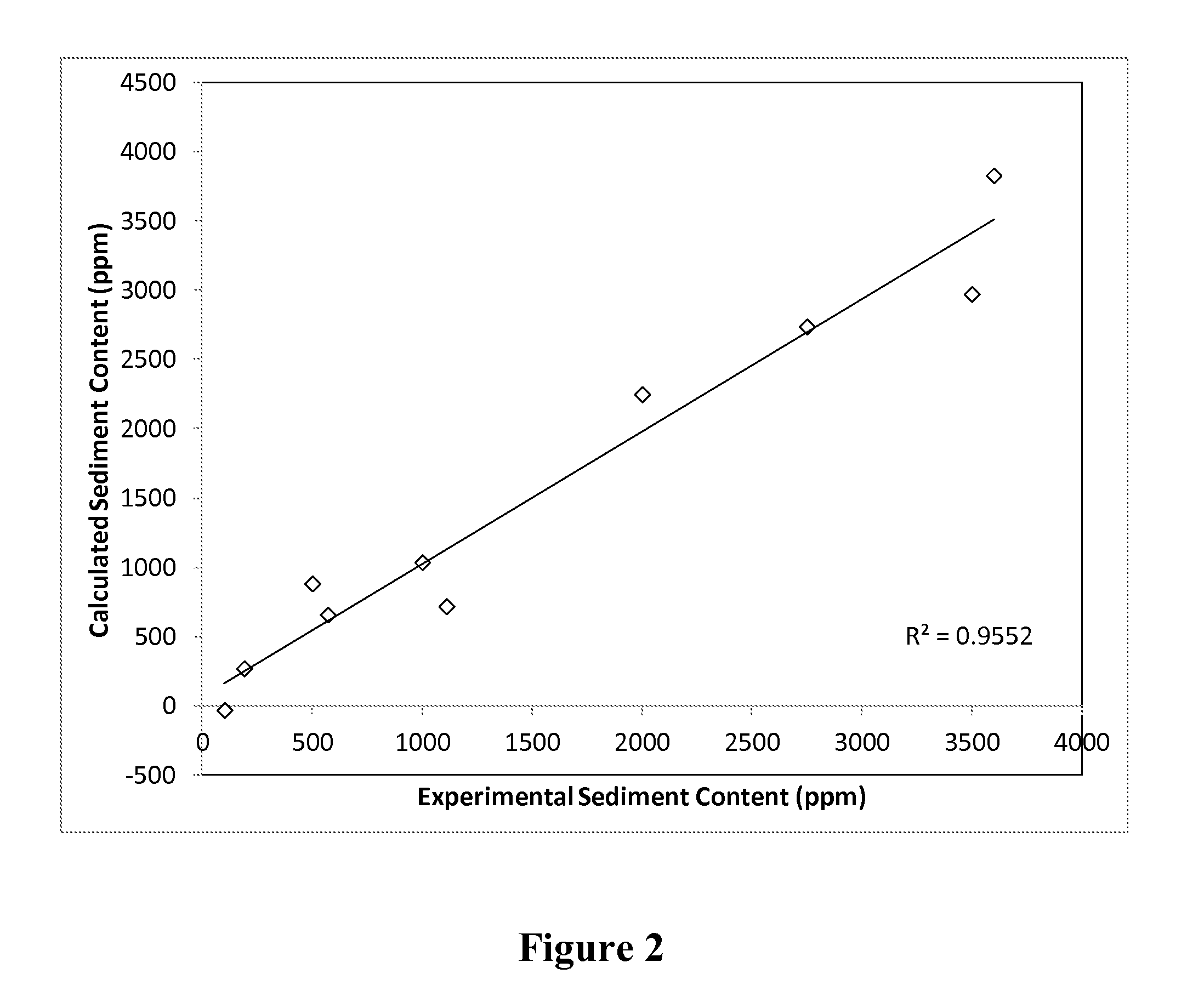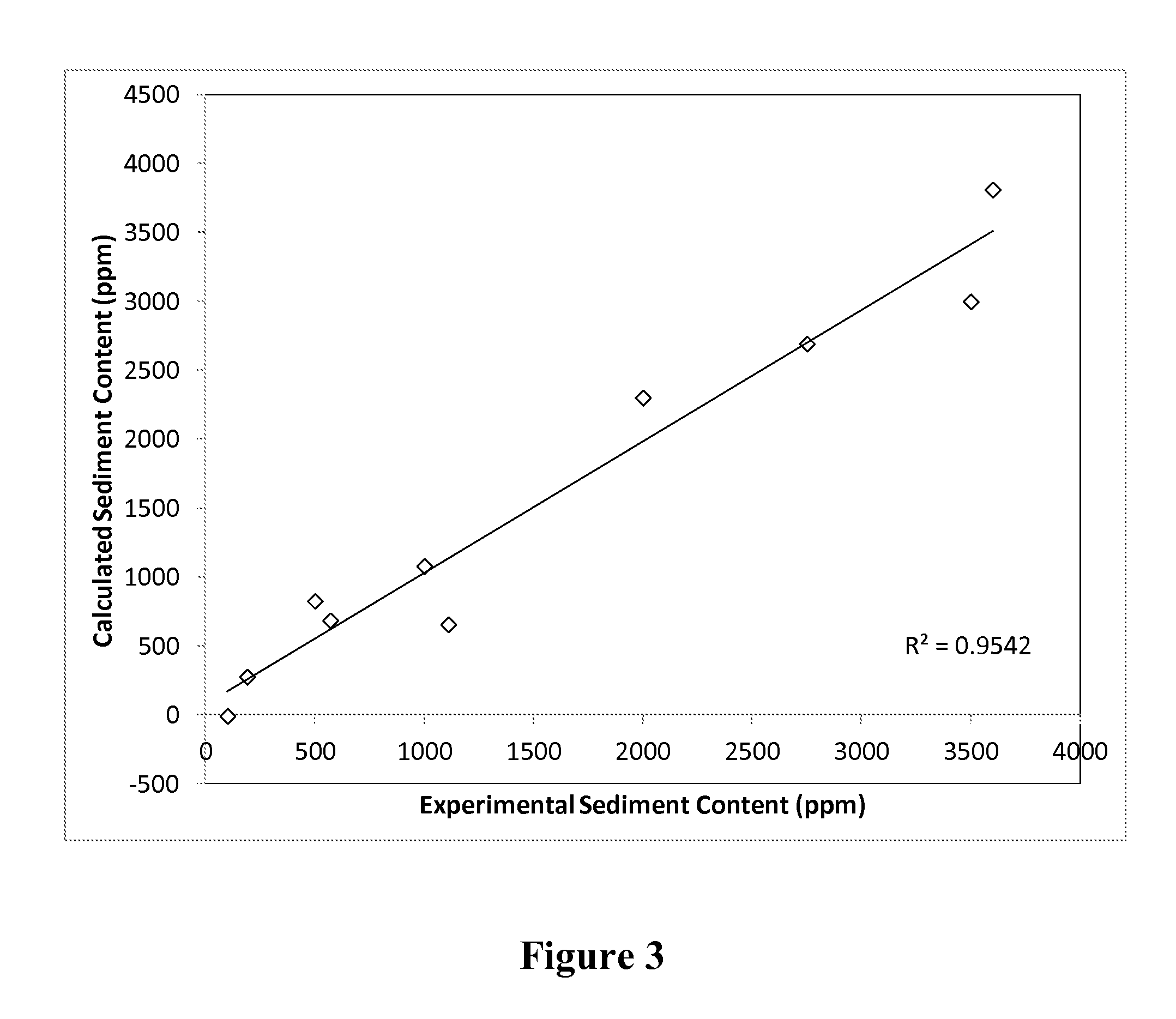Method for predicting sediment content of a hydroprocessed hydrocarbon product
- Summary
- Abstract
- Description
- Claims
- Application Information
AI Technical Summary
Benefits of technology
Problems solved by technology
Method used
Image
Examples
example 1
[0122]Several different hydrocarbon-containing feedstocks were hydroprocessed in a pilot plant using the operation conditions set forth in Table 1. The sediment content of the hydroprocessed hydrocarbon products was then measured using ASTM 4870. First, solutions of the feedstocks were prepared by dissolving 0.1000 g of the material in 10 mL of methylene chloride. Then, the solutions were injected into a separate stainless steel column packed with poly(tetrafluoroethylene) (PTFE) using n-heptane as a mobile phase. The flow rate during the whole process was 4 mL / min. The maltenes (heptane solubles) eluted from the column as the first peak around 2 minutes after the injection.
[0123]The asphaltenes remained precipitated in the column and were fractionated according to their respective solubilities by switching the mobile phase in successive steps to solvents of increasing solubility parameters: (1) 10 minutes after the injection of the sample, the mobile phase was switched to a blend o...
PUM
 Login to View More
Login to View More Abstract
Description
Claims
Application Information
 Login to View More
Login to View More - R&D
- Intellectual Property
- Life Sciences
- Materials
- Tech Scout
- Unparalleled Data Quality
- Higher Quality Content
- 60% Fewer Hallucinations
Browse by: Latest US Patents, China's latest patents, Technical Efficacy Thesaurus, Application Domain, Technology Topic, Popular Technical Reports.
© 2025 PatSnap. All rights reserved.Legal|Privacy policy|Modern Slavery Act Transparency Statement|Sitemap|About US| Contact US: help@patsnap.com



